Bali is known for its vibrant and visual living culture, and traditional attire is certainly part of this tapestry. Whether making their way to temples, hosting grand ceremonies, from weddings to blessings, there is very specific traditional Balinese clothing that must be worn, each different for men and women, and indeed depending on the type of ceremony.
Whether you’re a local resident or a visitor, understanding the traditional attire of the Balinese adds an extra layer of appreciation to the culture. What’s more, if you’re looking to visit a temple or perhaps have even been invited to a local Balinese ceremony, you’ll need to dress appropriately! Here we share what is the typical Balinese attire and also the meaning and characteristics behind them.
• What to Wear in a Balinese Temple
• Women’s Balinese Attire: The Kebaya
• Men’s Balinese Attire: Sarong, Saput and Udeng
• Matrimonial Attire: Gelungan Payas
• Colour and Symbology
What to Wear in a Balinese Temple
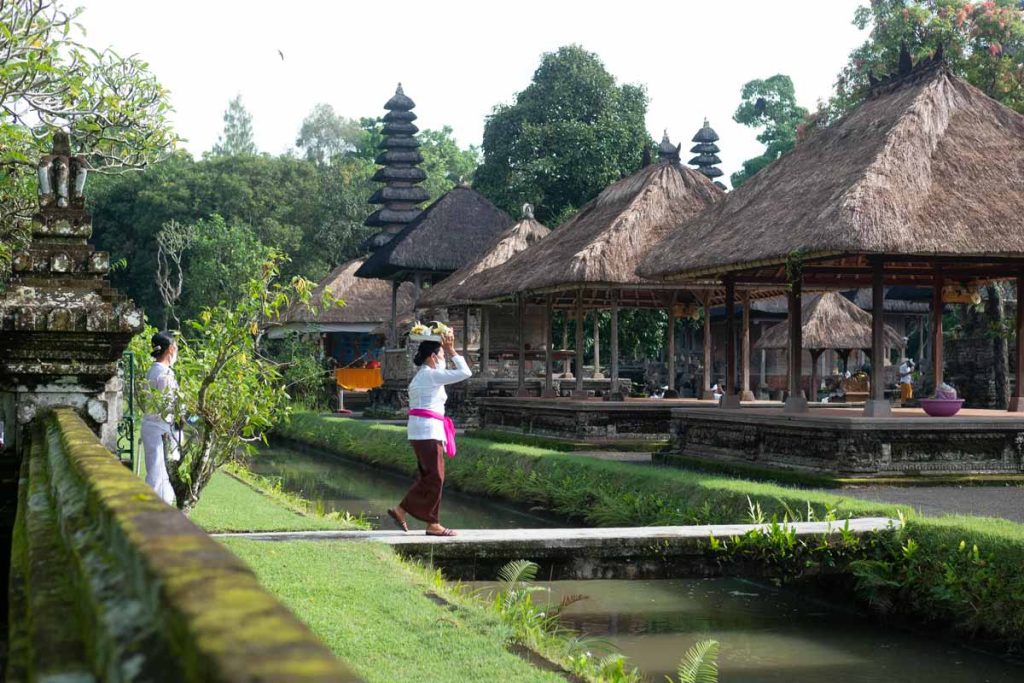
Each temple has its own look and unique history. Lots of visitors come to Bali just to visit the island’s beautiful temples. When visiting these sacred places, men and women are expected to dress modestly and respect these customs.
Although it’s not required to dress in the full traditional Balinese clothing, visitors should adhere to some level of modesty:-
• Covering shoulders and upper arms;
• Covering legs or thighs is a great sign of respect.
• It’s recommended not to wear tank tops or singlets.
• Most importantly however is to wear a sarong and sash, this is applicable to both men and women. Men may also opt to wear the udeng headdress, but this is not required for visitors. Bigger temples will provide sarongs and sash for visitors, either for rental or for free, however bringing your own can be handy and avoids any extra costs. Simple sarongs and sashes can be found in Balinese clothing stores across the island.
The Kebaya: Traditional Balinese Clothing for Women
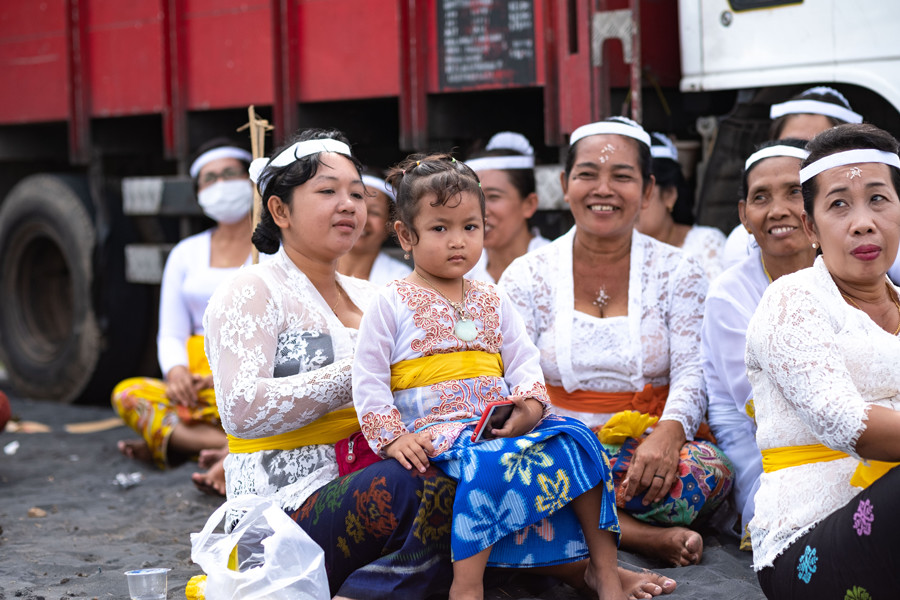
Before the Dutch colonisation of Indonesia, the Balinese people did not have traditional clothing. Balinese women used to be bare-chested in their daily life. This changed quickly as the sarong gained great popularity. The sarong, to cover the legs, is part of the kebaya. The kebaya was first introduced as a way to preserve the women’s modesty.
There are many variations of kebaya throughout the different regions of Indonesia. Four main items make up the complete Balinese kebaya. The kebaya consists of a blouse, typically made of lace material, although it can be made from any sort of materials. The kemben, a type of sarong, is a large piece of fabric wrapped around the lower body and tied at the waist, made from woven or batik cloth. Two cummerbunds complete the attire: the saput and the selendang.
The difference from the Javanese kebaya is the cummerbund tied around the woman’s waist. Compared to women living on other islands, Balinese women also tend to prefer more colourful palettes for their kebaya during special occasions. It usually comes in vibrant colours and is decorated with floral patterns.
Sarong, Saput and Udeng: Traditional Balinese Clothing for Men
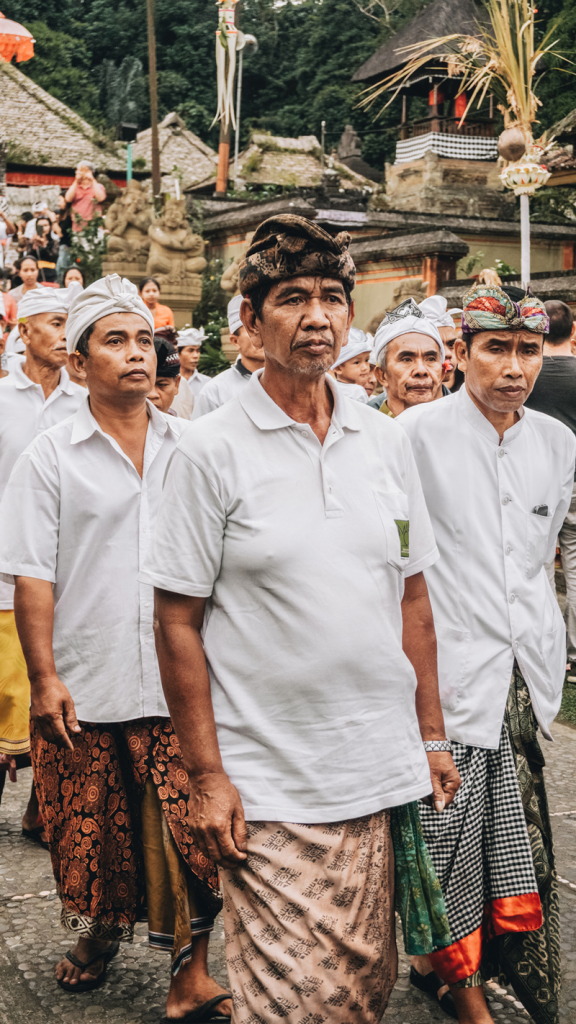
Just like Balinese women, Balinese men wear a sarong and saput. However men also wear an udeng, a headdress that symbolises the separation of head and body. When dressed in full attire, the man’s body is separated into three parts. Kemben (sarong), and saput separate legs and body, udeng separates head and body. This is symbolic of the way the Balinese conceptualise the universe, always on three levels: bhurloka (hell), bhuwah (middle world of man) and suarga (heaven).
The udeng, worn on a daily basis, has a unique philosophy and meaning behind it. A Balinese man is never fully dressed without it. An udeng isn’t worn randomly around the head: the right fold must be higher than the left one. This symbolises the superiority of the dharma (good behaviour) over the adharma (bad behaviour). The knot must always be placed in the middle of the forehead, which symbolises where the focus of the mind originates from. The straight upward edge symbolises a focus to worship God Almighty.
The colours of the headdress can also differ. As clarified earlier, white is a commonly used colour as it symbolises purity. The batik udeng is used during social events including traditional occasions or town meetings. Balinese Gamelan musicians, dancers and fashionably creative teenagers often use the red udeng and other colours.
Tri Murti, the triad of the tree gods Brahma, Vishnu and Shiva in Hinduism, is also represented in the udeng. The pull of edge of the right cloth symbolises Vishnu, the pull of edge on the left cloth symbolises Brahma, while the edge of the cloth pulling downwards symbolises Shiva.
A regular collared shirt is typically worn above the sarong, this is normally white and can be short- or long-sleeved. On formal occasions, such as a wedding, a safari suit will be worn over a t-shirt.
Gelungan Payas: Matrimonial & Ceremonial Attire
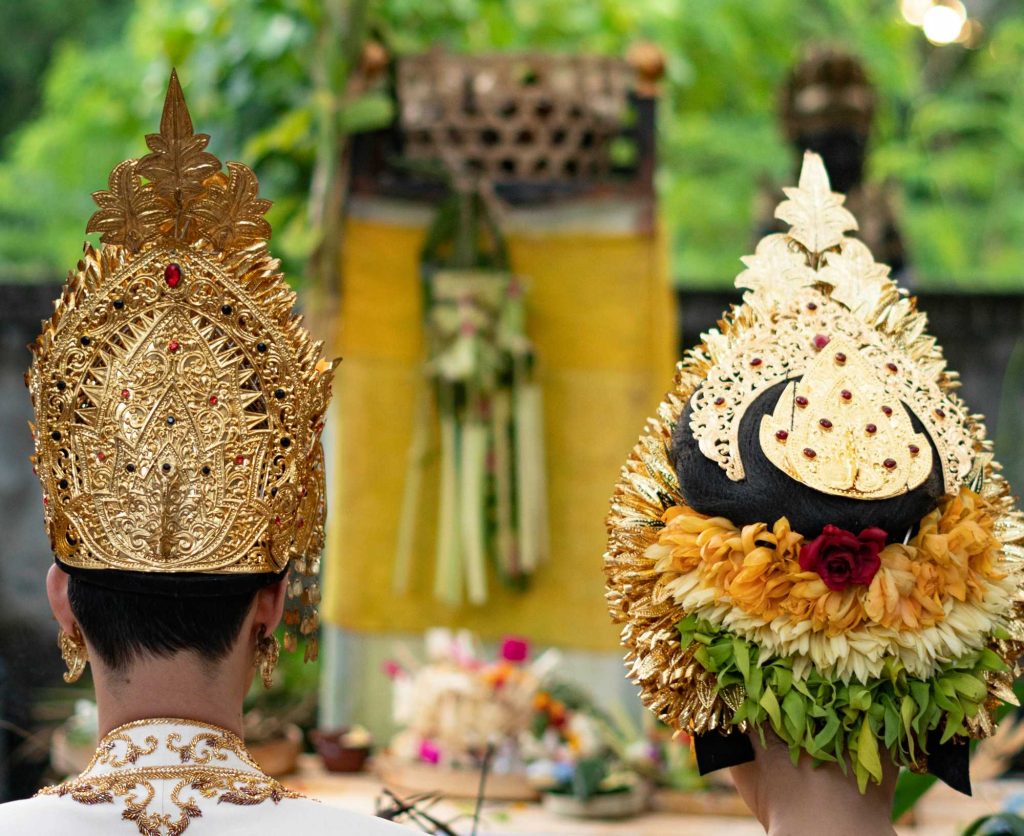
Balinese matrimonial attire is colourful and a time-honoured tradition. A Balinese bride doesn’t just wear a white gown, there lies deep meaning and thought behind her wedding costume. Embedded with traditional philosophies, the bride and groom’s wedding costumes are filled with unique attributes.
The Gelungan Payas is a perfect example of this. This stunning crown is the piece de resistance of the formal Balinese ceremonial attire, also known as payas agung. The eye-catching golden structure is symbolic of Mount Agung, overgrowing with thriving flora and abundance.
Attachments include the central ‘petitis’ with its jewelled band and pointed wings attached at the front, and the bunga kap emas (golden flower tip). Towering up to 40cm and weighing up to 3 to 4 kilograms, the symmetrical headdress is quite a weight to bear for women. However, one cannot deny how elegant they look when donning this regal attire. Once reserved for royalty, this formal ritual attire has now become widespread. It is used and adopted as part of the traditional Balinese wedding costume. All castes in the Balinese social strata now use it.
The height of the crown symbolises the level of the family’s caste. The striking outfit is most used for Balinese weddings, though is also used during other important ceremonies.
Brides and grooms don’t get to choose their costumes themselves. Their costumes are set, according to their family’s caste level. The same counts for songkets. This textile, made of layers with golden threads creates bright, joyful colours symbolises luxury and represents how wealthy a family is. The golden thread layers represent happiness and celebration.
Colour and Symbology
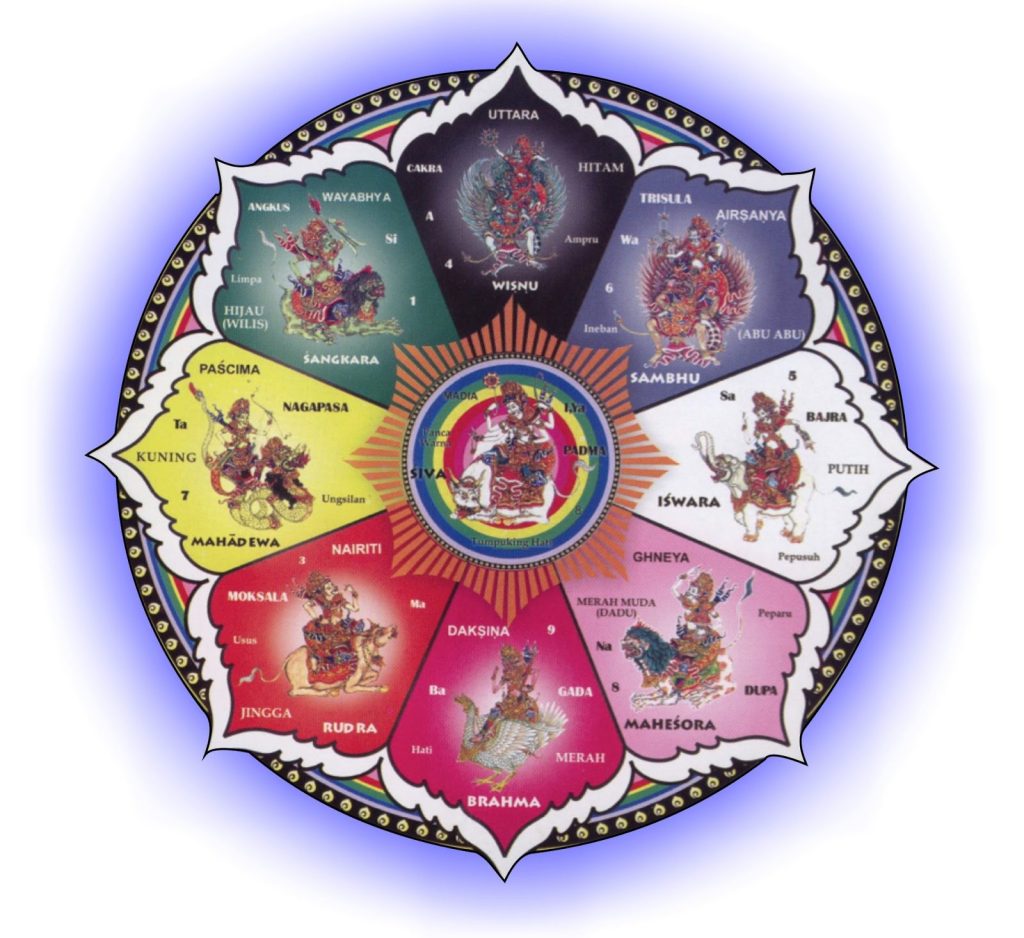
Colours hold deep meanings and play a significant part in Balinese culture. This is also reflected in Traditional Balinese clothing. The colours white and yellow for example, are common colours to be used in clothing, as they symbolise purity. Clothes with dark colours like brown, purple or red are usually worn at special occasions like weddings or local events, while black is most used at funerals.
Colours hold great significance in other aspects of Balinese culture as well. White flowers in offers, for instance, signify Lord Shiva. Moreover, you can spot women wearing white and yellow frangipani flowers in their hair, which serves as a symbol of Lord Shiva. The significance of colour goes back centuries. It is more extensively explained in the Nawasanga wheel, where colours are associated with different aspects of Balinese culture.
If you love Balinese culture and travel, make sure to follow us on Instagram @nowbalimag






